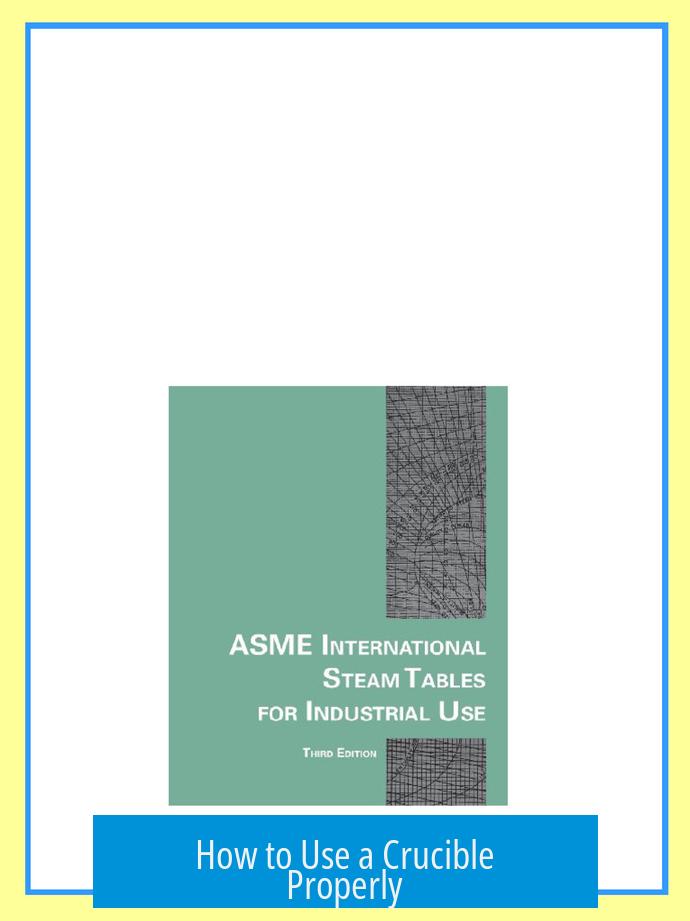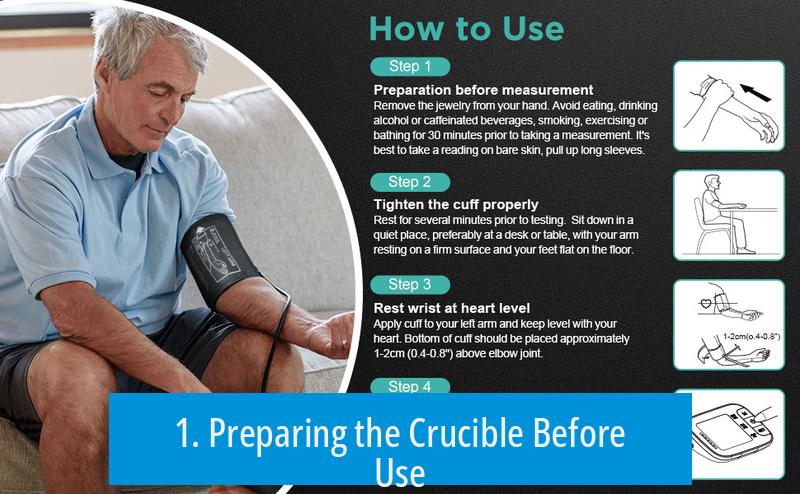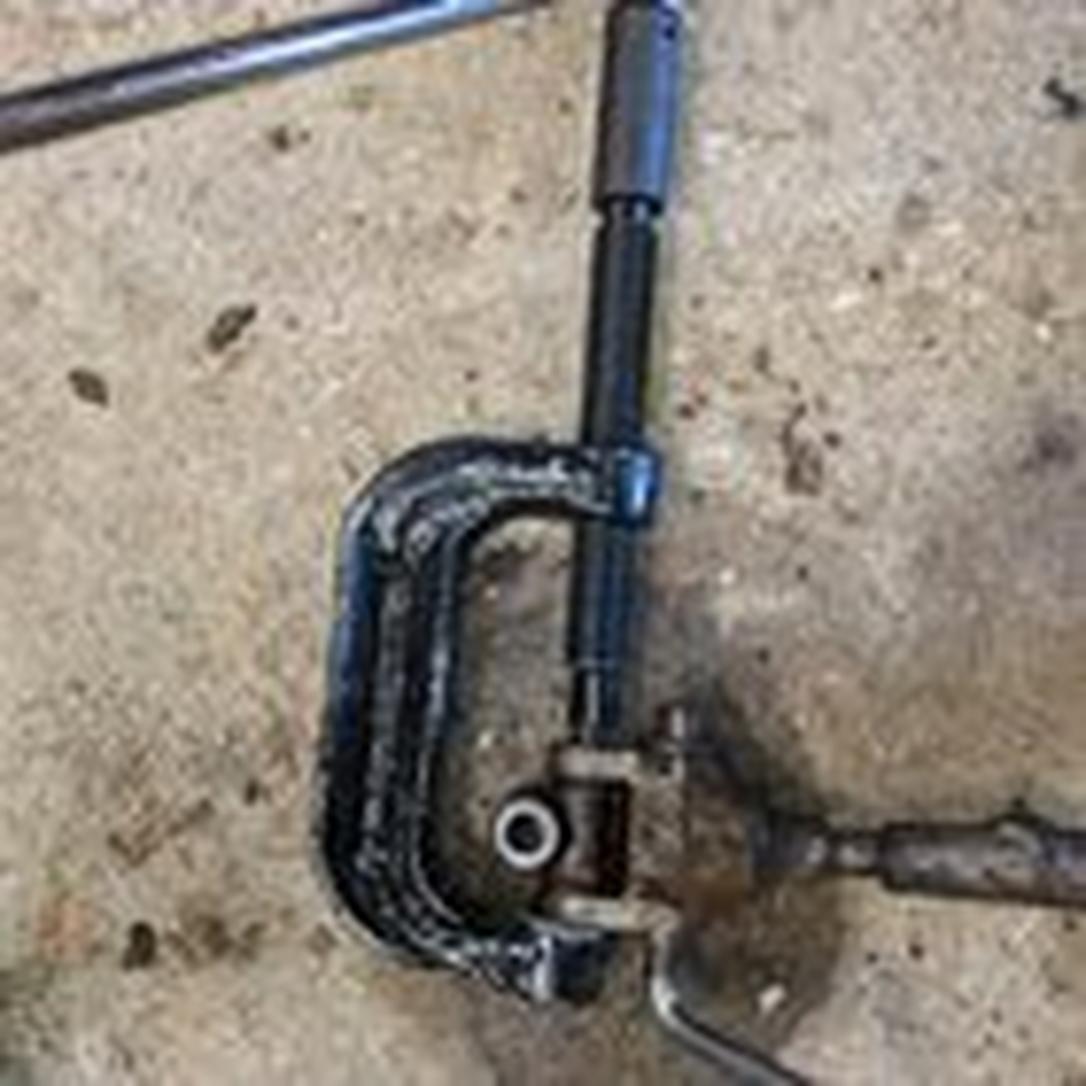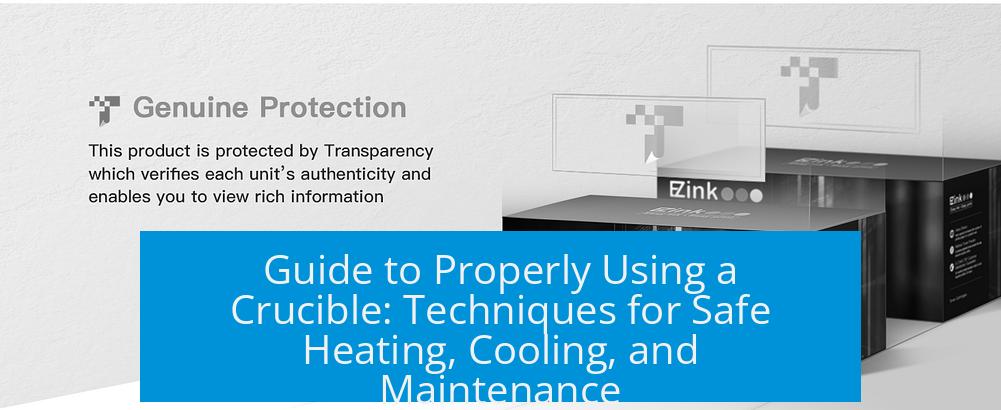How to Use a Crucible Properly

Using a crucible properly involves carefully tempering, heating, cooling, and maintaining it to prevent damage and ensure accurate experimental results. Crucibles are essential lab ceramics designed for high-temperature processes, such as melting metals and chemical reactions. Proper handling minimizes cracking and contamination.
1. Preparing the Crucible Before Use

Before first use, a crucible should be tempered to remove moisture and thermal stresses.
- Heat the empty crucible slowly to around 500°F (260°C) and maintain for 20 minutes.
- Increase temperature to red heat, then stop heating.
- Allow the crucible to cool gradually in air.
This process drives off absorbed moisture and strengthens the crucible structure. Tempering reduces the risk of sudden cracking during subsequent heating.
2. Heating Techniques

Heat the crucible progressively to avoid thermal shock. Sudden temperature changes create internal stresses, especially harmful to ceramic crucibles.
- Start with low heat and gradually raise to target temperature.
- Ceramics are generally more prone to fracturing during cooling than heating.
- Slower cooling improves durability.
Repeated fast heating or cooling cycles can shorten crucible life dramatically.
3. Avoiding Thermal Shock

Crucibles must never be submerged in cold water or any liquid immediately after heating.
- Dunking a hot crucible risks instant cracking and irreversible damage.
- Do not use liquids to cool the crucible.
- Allow cooling under air or controlled conditions only.
Such practices prevent catastrophic failure during use.
4. Cooling and Storage
Once the heating cycle ends, cool the crucible slowly and safely.
- Leave it exposed to room air until ambient temperature.
- Alternatively, place it directly into a desiccator to prevent moisture or carbon dioxide absorption.
- Desiccators contain porcelain plates that tolerate hot crucibles without cracking.
Slow and controlled cooling preserves the crucible’s integrity and measurement accuracy.
5. Cleaning and Maintenance
Cleaning a crucible depends on the nature of the residue left after use.
- Place a cooled crucible in a beaker of concentrated hydrochloric acid and gently boil to remove many common residues.
- Accept that staining occurs and rarely affects the crucible’s functionality.
- Avoid abrasive cleaning methods that might damage the crucible surface.
Regular cleaning prolongs crucible life but never eliminates the need for replacement.
6. Crucibles as Consumables
Crucibles have a limited lifespan and should be treated as consumables in laboratory work.
- Use separate crucibles for different metals or materials to avoid cross-contamination.
- Examples of dedicated crucibles include those for bronze, brass, aluminum, silver, gold, and pewter alloys.
- Retire crucibles once cracked, visibly worn, or compromised to avoid hazards.
With proper care, one crucible can serve for over a dozen melts, but caution with molten material in aged crucibles is essential.
7. Enhancing Durability with Glazing
Many users apply a borax glaze before initial use to improve crucible durability.
- Heat the crucible to red heat in a furnace.
- Sprinkle borax inside and roll it around to coat the inner surface.
- This creates a protective layer to reduce substance adhesion and minor damage.
Multiple instructional videos exist online demonstrating this method effectively.
8. Personal Experiences and Cautions
Despite precautions, all crucibles eventually crack or break during typical lab use.
A notable anecdote recalls a sintered glass crucible breaking during handling, causing loss of a precious milligram-scale product and ruining the yield calculation.
Such incidents underscore the need for careful handling and conservative use of aged crucibles.
9. Conflicting Advice on Cooling
Some sources recommend dunking a crucible in ice water after heating to 600°C, but this contradicts the majority of safety guidelines.
The consensus strongly advises against immersing hot crucibles in water to avoid thermal shock.
Following the slow air cooling or desiccator method remains the accepted best practice.
Summary of Key Takeaways
- Temper crucibles before first use by gradual heating and slow cooling to remove moisture.
- Heat crucibles slowly and avoid sudden temperature changes that cause cracks.
- Never immerse a hot crucible in water or liquids; cooler it gradually in air or a desiccator.
- Clean crucibles using acid boiling if necessary; staining is usually harmless.
- Treat crucibles as consumables and replace when cracked or worn.
- Glaze with borax before first use to improve lifespan.
- Handle hot crucibles with care to avoid accidents and product loss.
How to Use a Crucible Properly: Mastering the Art Without Meltdown Drama
Using a crucible properly requires careful handling, slow heating and cooling, and regular maintenance to avoid cracks or premature failure. Let’s dive in with hands-on tips that prevent your molten experiment from turning into a fiery disaster—or a shattered mess on the lab floor.
Crucibles seem simple: a cup-like container to melt metal or other materials, but misuse can cause costly breakage or loss.
Tempering: The Crucible’s Warm-Up Routine
Ready for a hot date with your crucible? First, temper it. This means slowly heating the empty crucible to about 500°F and holding it there for 20 minutes. Then crank it up to red heat before turning off and letting it cool slowly. This ritual evaporates hidden moisture that can lead to cracks later. Think of it as a gentle stretch before a marathon—not just jumping in and hurting yourself.
Skimping on tempering is like diving into ice water on day one; some ceramics simply aren’t built for sudden shocks.
Slow and Steady: Heating Advice to Keep Things Intact
Heat a crucible slowly to avoid thermal shock—sudden changes in temperature can cause fractures. Ceramics don’t take well to shock cooling; they can crack more on the way down than going up. If your crucible could talk, it’d plead for a gradual rise and fall in heat.
Pro Tip: Use a furnace or heat source that lets you control temperature ramp-up nicely.
Thermal Shock? Just Say No!
NEVER dunk a hot crucible in water or any liquid. Seriously, just don’t do it. It might feel like a quick fix to cool it down fast, but it’s a one-way ticket to cracking city. Cold water suddenly meeting a hot ceramic cup spells disaster.
This is one area where sticking to the rule saves you grief and broken pieces on the floor.
Cooling: Patience is a Crucible’s Best Friend
After heating, let it cool slowly in open air. You want a calm cooldown, not the equivalent of a rock concert mosh pit. Alternatively, place the hot crucible on a porcelain plate inside a desiccator. These plates can safely handle hot crucibles and blocking moisture or CO2 absorption helps keep your material’s weight stable.
This step can be vital when precise weighing after melting is part of the game.
Cleaning and Maintenance: Keep Your Crucible Happy
Cleaning depends on what you melted. Got stubborn residues? Try placing the cool crucible in a beaker of concentrated hydrochloric acid and boil it—voilà, a sparkling tool ready for the next mission.
Stains are normal and usually harmless. They won’t affect your melting spectacle, so don’t stress about a little discoloration.
One Crucible, One Material: Avoid Cross-Contamination
Crucibles are consumables. Yes, as beloved as they may be, they wear out and need replacement. Experts recommend one crucible per metal or alloy type—bronze, brass, aluminum, silver, gold, pewter—each their own special cup.
Squeeze out as many uses as you can, but if cracks or wear appear, retire it immediately. Handling molten metals in a worn vessel is *not* a fun way to test your reflexes.
A Little Extra Durability: Glazing with Borax
Want to give your crucible some armor? Try glazing it: heat the crucible red hot, sprinkle borax, and roll it around. This process forms a protective layer to boost durability. Loads of handy videos online show the step-by-step. It’s like a spa day for your crucible.
The Reality Check: It Will Break — Eventually
Here’s the honest truth from experience: all crucibles crack and break eventually. The author recalls university days when a fragile sintered glass crucible shattered while handling it, spreading precious milligram quantities all over the lab floor. A nightmare in yield calculation and cleanup rolled into one.
This story serves as a polite reminder to handle hot and heavy crucibles with serious care. Tongs and gloves are your friends.
Conflicting Advice? Avoid Immersing Hot Crucibles in Water
You might see some conflicting claims online about dunking crucibles in ice water after heating to ~600°C. Most reliable sources, and common sense, strongly advise against this. The risk of thermal shock and cracking is too high.
Stick to slow, air-cooled cooldowns or desiccators instead. Better safe than a brittle broken mess.
Wrapping Up Your Crucible Mastery
- Temper before first use by slow heating and cooling.
- Heat gradually and avoid quick temperature swings.
- Never dunk hot crucibles in water or liquids.
- Cool slowly on air or on porcelain in a desiccator.
- Clean carefully using acids if needed, after cooling.
- Use one crucible per material and retire them when cracked.
- Glaze with borax for added durability.
Following this quirky ritual makes your crucible your trusty lab buddy rather than a ticking time bomb. Waiting for a crucible to cool and treating it gently may feel tedious, but your melted metals will thank you—and your floor will stay clean.
So, how long do your crucibles last, and do you have any war stories about a melt gone sideways? Drop your experiences below—sharing saves others from similar fiery fates!





Leave a Comment